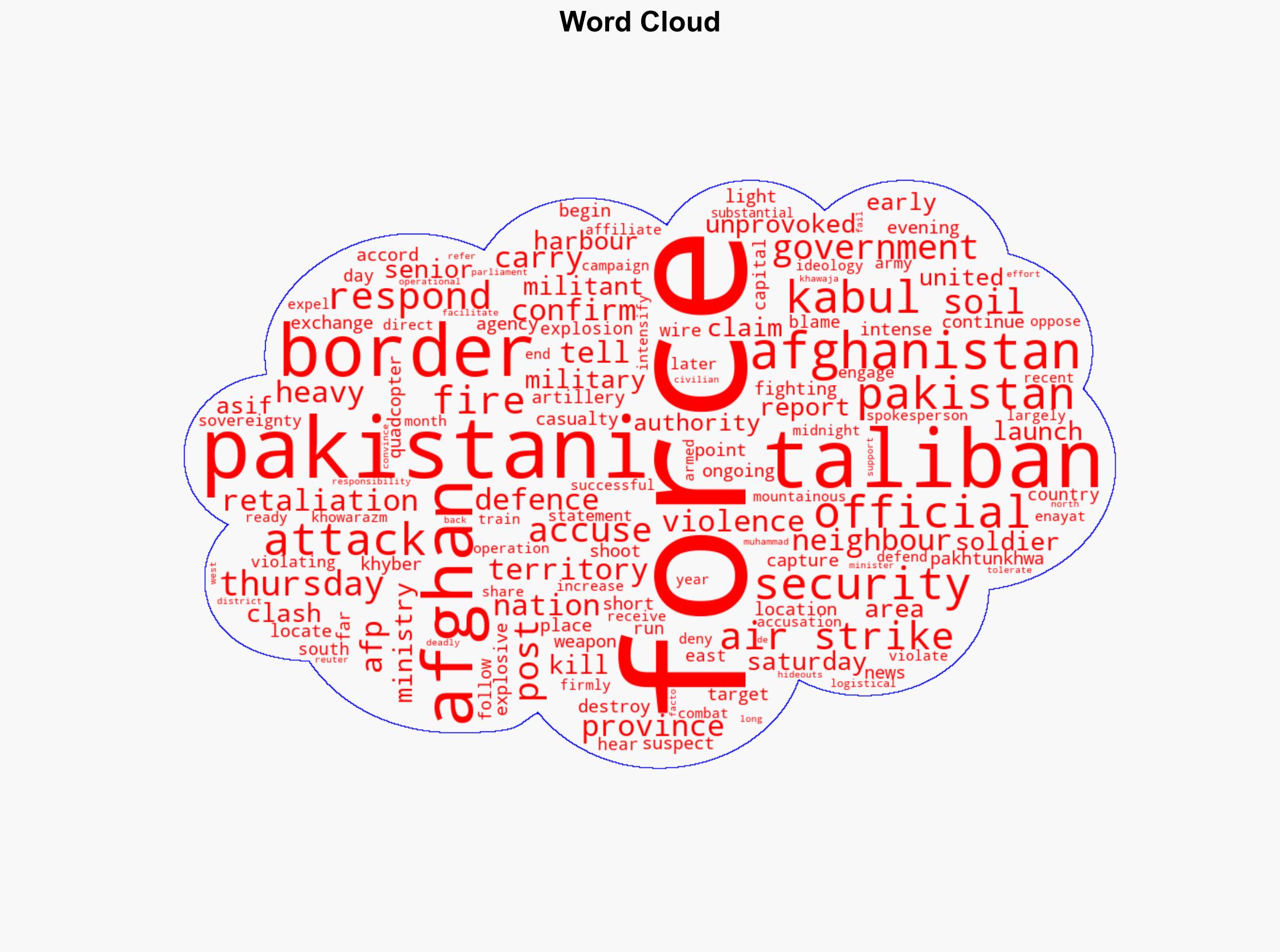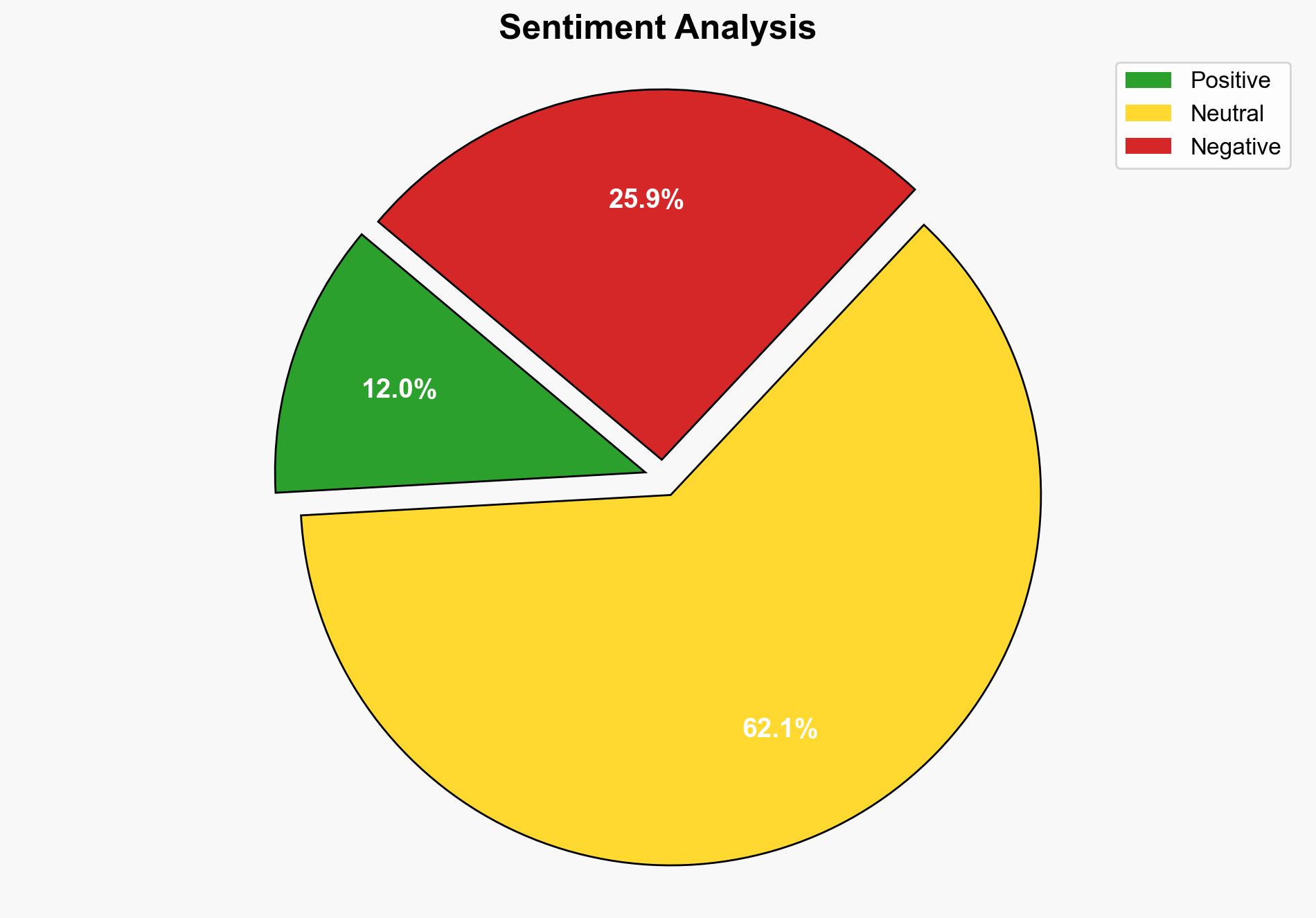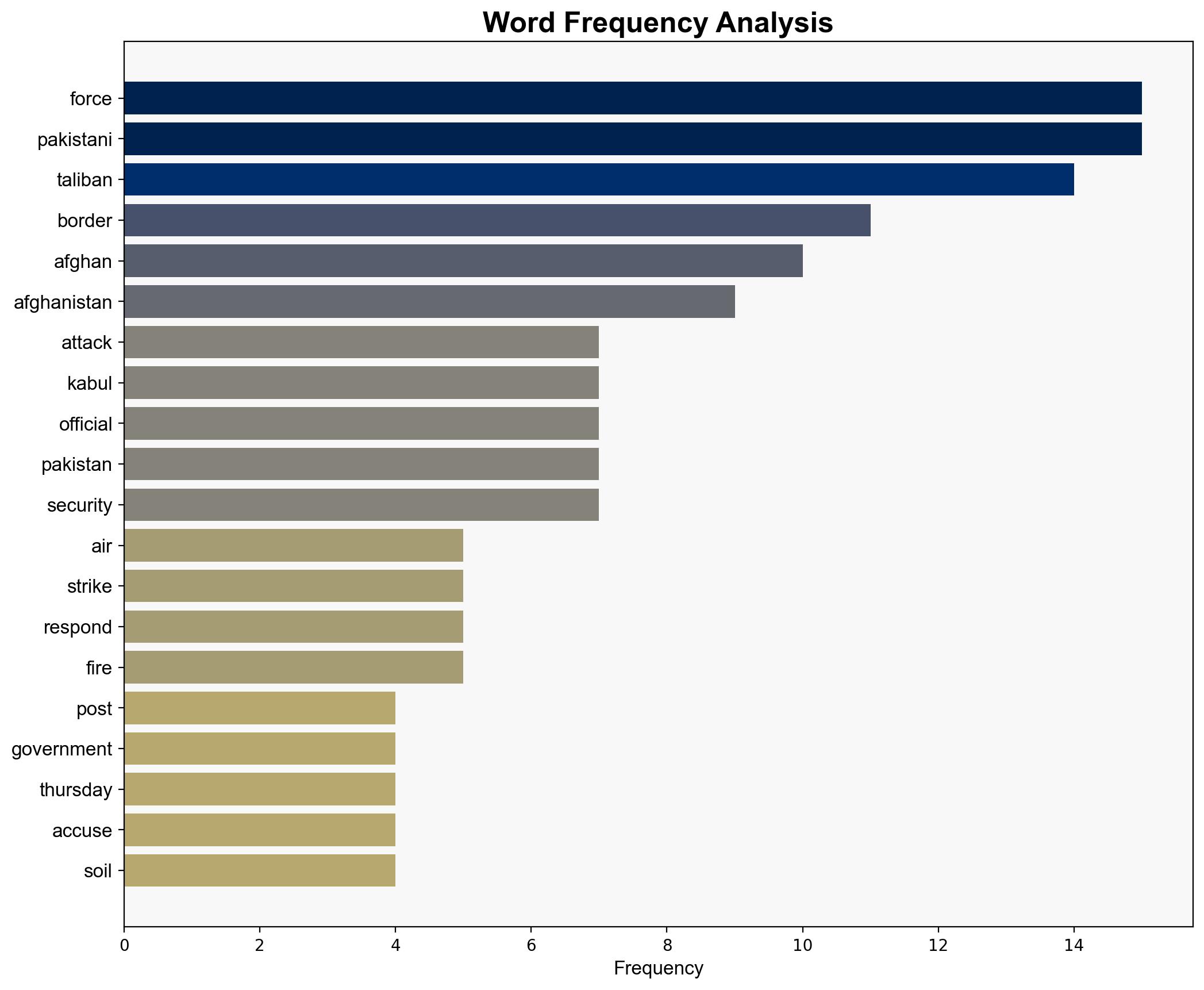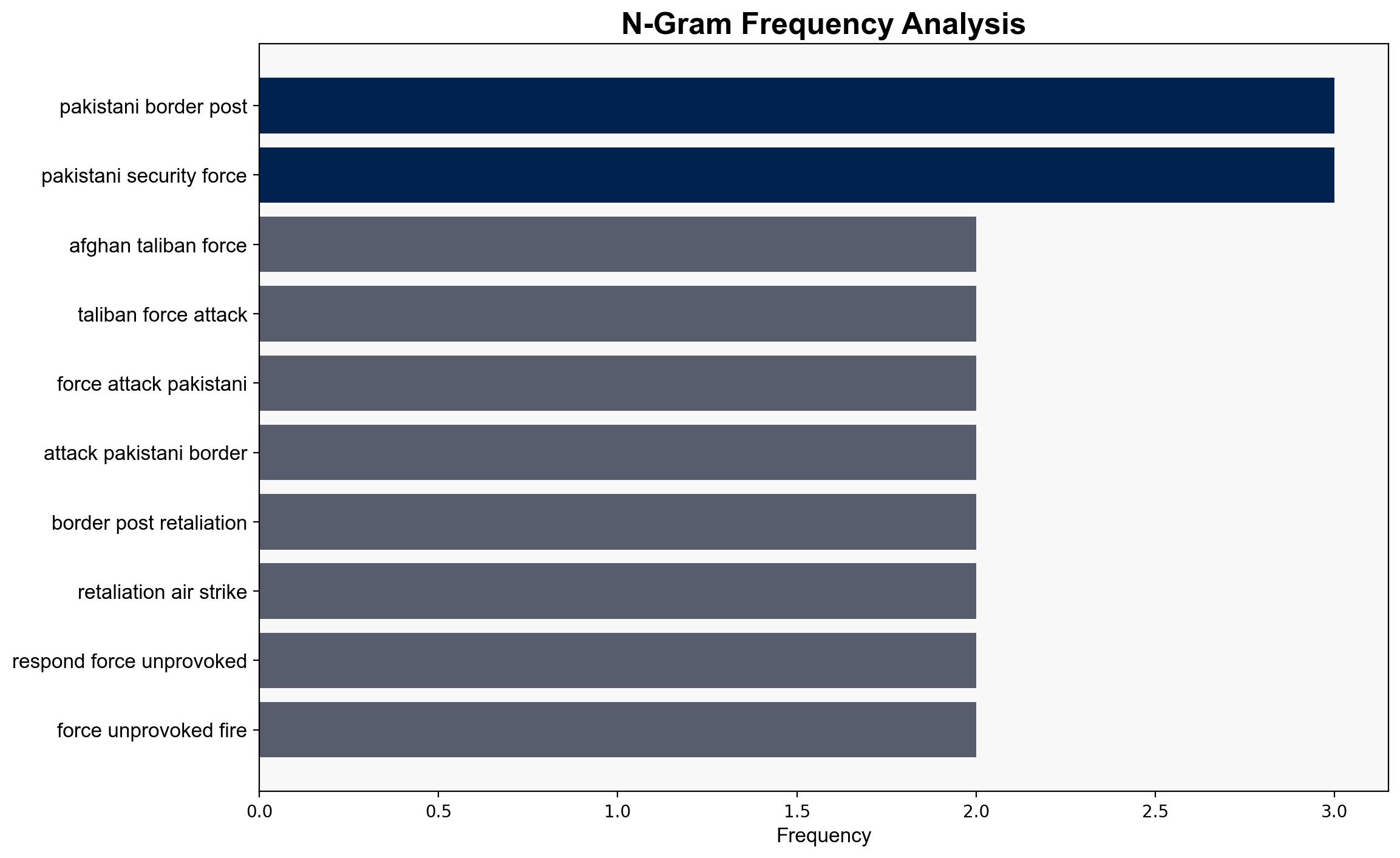Afghan Taliban Pakistani soldiers fight along border after Kabul air strike – ABC News (AU)
Published on: 2025-10-12
Intelligence Report: Afghan Taliban Pakistani soldiers fight along border after Kabul air strike – ABC News (AU)
1. BLUF (Bottom Line Up Front)
The most supported hypothesis is that the Afghan Taliban’s attack on the Pakistani border post is a direct retaliation for a Pakistani airstrike in Kabul, perceived as a violation of Afghan sovereignty. Confidence level: Moderate. Recommended action: Increase diplomatic engagement to de-escalate tensions and establish communication channels to prevent further military escalation.
2. Competing Hypotheses
Hypothesis 1: The Afghan Taliban attacked the Pakistani border post in direct retaliation for the Pakistani airstrike in Kabul, which they view as an infringement on Afghan sovereignty.
Hypothesis 2: The attack by the Afghan Taliban is part of a broader strategy to destabilize the region and assert control over border areas, independent of the specific airstrike incident.
Using the Analysis of Competing Hypotheses (ACH) 2.0, Hypothesis 1 is better supported due to the timing of the attack closely following the airstrike and statements from Taliban officials framing the attack as a response to perceived aggression.
3. Key Assumptions and Red Flags
Key Assumptions:
– The Afghan Taliban’s actions are directly linked to the airstrike in Kabul.
– Pakistan’s military actions are solely defensive in nature.
Red Flags:
– Lack of independent verification of the events and casualty figures.
– Potential bias in statements from both Afghan and Pakistani officials aiming to justify military actions.
4. Implications and Strategic Risks
The ongoing conflict could lead to further destabilization of the region, impacting regional security and economic conditions. There is a risk of escalation into a broader conflict involving other regional actors. The situation could also exacerbate humanitarian issues along the border.
5. Recommendations and Outlook
- Engage in diplomatic dialogue with both Afghan and Pakistani governments to de-escalate tensions.
- Monitor border activities closely to anticipate potential escalations.
- Scenario Projections:
- Best Case: Successful diplomatic intervention leads to a ceasefire and resumption of peace talks.
- Worst Case: Escalation into a larger conflict involving regional powers.
- Most Likely: Continued skirmishes with periodic diplomatic efforts to manage tensions.
6. Key Individuals and Entities
– Enayat Khowarazm (Taliban Defence Ministry Spokesperson)
– Khawaja Muhammad Asif (Pakistani Defence Minister)
7. Thematic Tags
national security threats, counter-terrorism, regional focus




